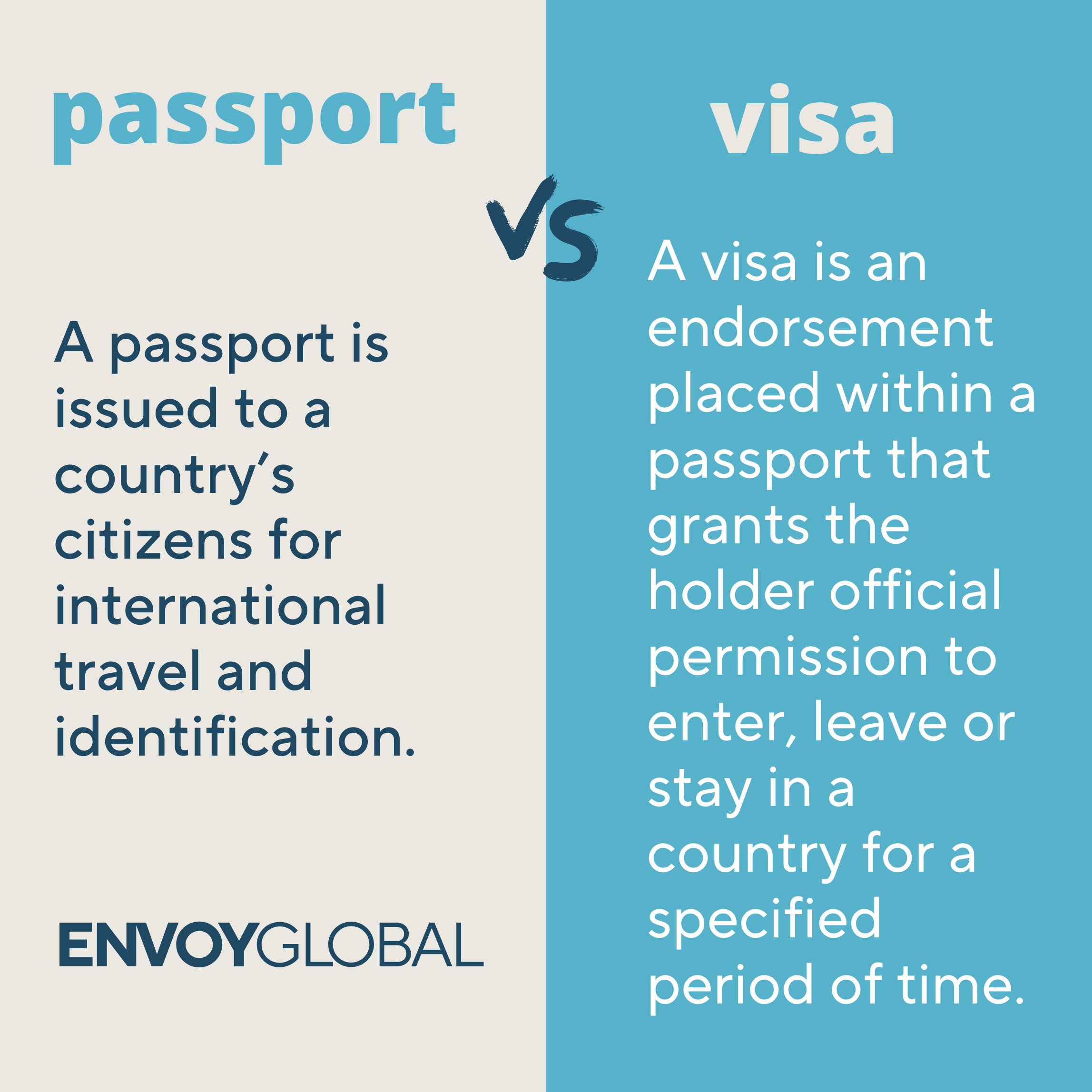Embarking on an international journey? Navigating the world of travel documents can be perplexing, especially when it comes to understanding the difference between a passport and a visa. Many travelers often find themselves wondering, “Do I need a visa or just a passport?”. This article clarifies the key distinctions between these essential documents, ensuring you are well-prepared for your next adventure.
Understanding the Passport: Your National Identity Document
A passport is fundamentally an identification document issued by your country’s government. It serves as proof of your citizenship and is crucial for international travel. Think of your passport as your global ID card, validating your nationality and granting you the right to return to your home country after traveling abroad. Here are the primary functions of a passport:
- Proof of Citizenship: It confirms your nationality to border control and immigration authorities worldwide.
- International Travel Enabler: It allows you to travel between countries, facilitating both departure from your home country and entry into foreign nations (though sometimes in conjunction with a visa).
- Personal Identification: Passports contain vital personal information, including your photograph, full name, date and place of birth, gender, and physical characteristics, acting as a universally accepted form of identification.
- Home Country Re-entry: Crucially, a passport guarantees your right to re-enter your country of citizenship.
While some countries may permit entry to U.S. citizens with just a passport for short tourist stays, many destinations mandate a visa in addition to a valid passport. It’s always essential to verify the specific entry requirements of your destination country well in advance of your travel dates. Different types of passports also exist, such as those issued to diplomats and government officials, which may have varying privileges and requirements compared to standard passports issued to general citizens.
 Infographic comparing passport and visa: A passport identifies your citizenship and allows re-entry to your home country, while a visa grants permission to enter a foreign country for a specific duration.
Infographic comparing passport and visa: A passport identifies your citizenship and allows re-entry to your home country, while a visa grants permission to enter a foreign country for a specific duration.
Exploring the Visa: Permission to Enter a Foreign Land
In contrast to a passport, a visa is not an identification document but rather an official endorsement placed within your passport. A visa is essentially permission granted by a foreign country allowing you to enter, stay within, or transit through their borders for a specific purpose and duration. It’s a foreign government’s way of controlling who enters their country and for how long. Key aspects of visas include:
- Entry Permission: A visa explicitly grants you the legal authorization to enter a foreign country.
- Specific Purpose and Duration: Visas are issued for particular reasons, such as tourism, study, work, or transit, and are valid for a defined period.
- Variety of Types: Common visa categories include tourist visas for leisure travel, student visas for educational pursuits, work visas for employment, and transit visas for passing through a country en route to another destination.
- Entry Requirements Vary: Visa requirements differ significantly depending on your nationality and the country you plan to visit. Some countries offer visas on arrival, while others necessitate advance application processes, potentially including interviews or medical screenings. Visas can also be for single entry, allowing just one visit, or multiple entry, permitting several entries within the visa’s validity.
Key Differences at a Glance
To summarize the core differences between a passport and a visa:
| Feature | Passport | Visa |
|---|---|---|
| Issuing Authority | Your home country’s government | The destination country’s government |
| Purpose | Proof of citizenship & international ID | Permission to enter a foreign country |
| Issued To | Citizens of a country | Foreign nationals seeking entry |
| Format | Booklet containing personal identification | Stamp or sticker placed in your passport |
| Necessity for Travel | Always required for international travel | Required depending on nationality & destination |
Do You Need Both a Visa and a Passport?
In many instances, yes, you will need both a valid passport and a visa for international travel. Your passport is your fundamental travel document, while a visa, when required, is an additional authorization to enter a specific country. Think of it this way: your passport is like your driver’s license (proof of who you are), and a visa is like a permit to drive in a specific city or country (permission to enter).
Understanding the difference between a visa and a passport is crucial for smooth and stress-free international travel planning. Always check the specific entry requirements for your destination well in advance to ensure you possess the correct documents for your trip. Resources like embassy websites and travel advisories are invaluable for obtaining up-to-date information.
